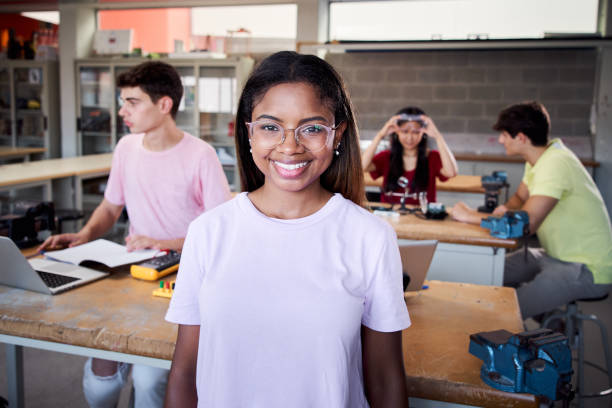Defining The Concept Initiating Positive Relationships For Collaboration In School Work.
Need Help?
[quform id="1" name="Schools Form"]Initiating positive relationships for collaboration in schoolwork is about creating a foundation of trust, respect, and mutual support among students to enhance their collective learning experiences and achieve common academic goals. This concept is crucial in educational environments, as it encourages teamwork, improves communication, and fosters an inclusive atmosphere conducive to learning. Let’s break down this concept into key components and understand its significance in an educational context.
Table of Contents
Building Trust
Trust is the cornerstone of any positive relationship, especially in a collaborative setting. When students trust each other, they are more likely to share ideas freely, provide honest feedback, and depend on one another to fulfill their parts of a project. Building trust involves consistent communication, reliability, and showing respect for each other’s contributions and perspectives.
Fostering Respect
Respect among peers is essential for positive collaboration. This means valuing each other’s ideas, listening actively, and acknowledging the diversity of thoughts and experiences each member brings to the table. A respectful environment allows all students to feel valued and encourages a more engaged and productive collaboration.
Mutual Support
Collaboration thrives on mutual support, where students help each other overcome challenges, provide encouragement, and share resources. This supportive network not only enhances academic outcomes but also builds a sense of community and belonging, making schoolwork more enjoyable and less stressful.
Effective Communication
Clear and open communication is vital for successful collaboration. It involves articulating ideas clearly, asking questions to clarify doubts, and discussing issues openly to prevent misunderstandings. Effective communication ensures that all team members are on the same page and working towards the same objectives.
Setting Common Goals
For collaboration to be effective, all members need to understand and agree on the common goals they are aiming to achieve. This alignment ensures that the group’s efforts are directed towards achieving these objectives, with each member understanding their role in the process.
Embracing Diversity
Positive relationships for collaboration recognize and embrace the diversity of team members, including different backgrounds, skills, and perspectives. This diversity can be leveraged to bring creative solutions to problems, offer various viewpoints, and enhance the learning experience for everyone involved.
Encouraging Accountability
Accountability is crucial in collaborative work. When students hold themselves and each other accountable for their contributions, it ensures that tasks are completed on time and to a high standard. Accountability fosters a sense of responsibility and commitment to the group’s success.
Leveraging Strengths
A key aspect of initiating positive relationships for collaboration is recognizing and leveraging the strengths of each member. By assigning roles that align with each individual’s strengths, groups can work more efficiently and effectively, leading to better outcomes and a more satisfying collaborative experience.
Conclusion
Initiating positive relationships for collaboration in schoolwork is about creating a supportive, respectful, and effective team environment. By focusing on trust, respect, mutual support, and clear communication, students can enhance their learning experiences, achieve better academic results, and develop important life skills such as teamwork, problem-solving, and interpersonal communication. This approach not only benefits academic projects but also prepares students for collaborative work in their future careers and personal lives.
Did You See These?
- Defining The Term, Innovative Entrepreneur In South African Context
- 7 Ways How Grade 12 Learners Could Use Communication To Study Effectively
- Evaluating The Impact Of Peer Pressure, As A Social Factor, On The Ability Of A Grade 12 Learner To Do Their School Activities
- How The Inability To Effectively Manage Intrapersonal Conflict Could Affect Your Relationship With Your Peers
- 11 Ways On How Grade 12 Learners Could Use Positive Relationships To Enhance Effective Communication Among Learners At The School
- The 14 Values Of An Ability To Accommodate Others’ Views When Completing Assessment Projects
- How Different Personality Types Could Negatively Impact Communication Between Grade 12 Learners When They Work On Group Assignments
- The 9 Educational Benefits Of An Ability To Effectively Communicate Your Feelings About Challenges In Your School Work With Your Teachers

